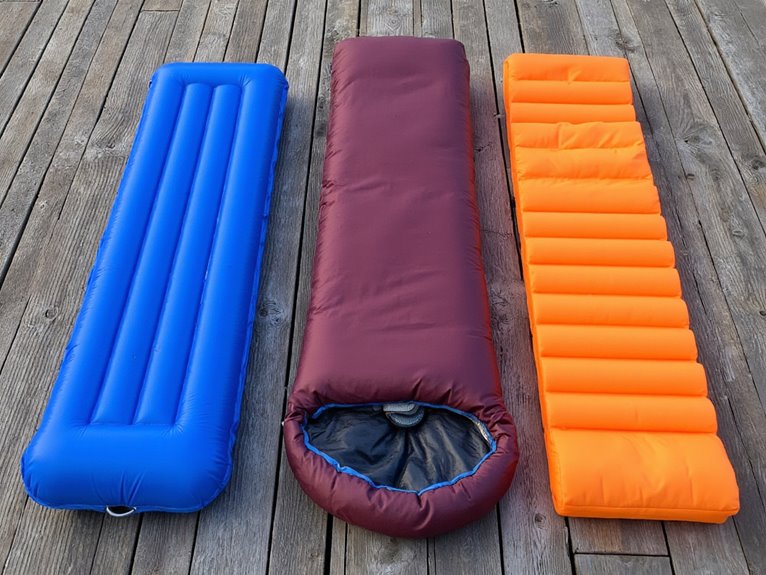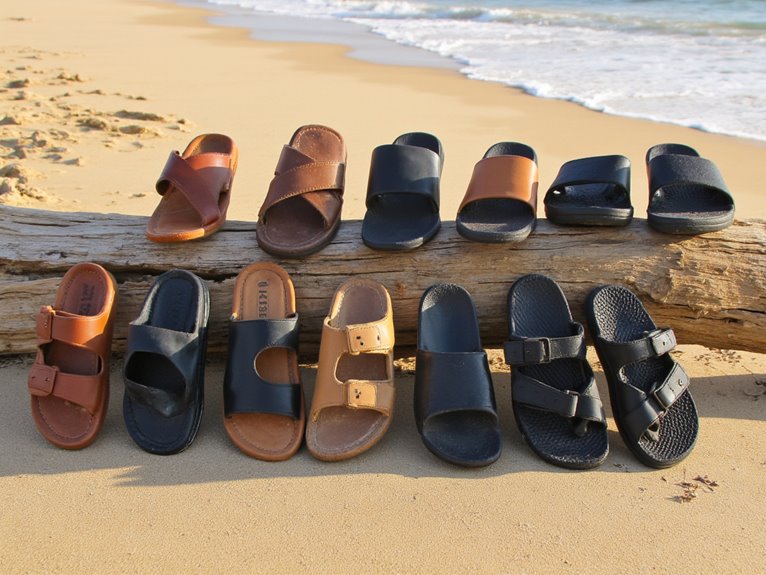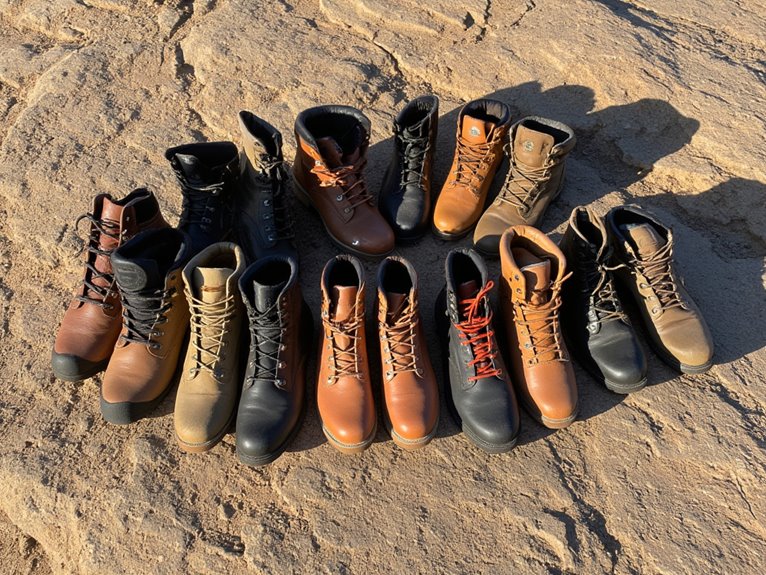Sleeping Pad Materials Compared: Inflatable, Self-Inflating & Foam
You’ll find three distinct sleeping pad technologies each suited for different camping needs. Inflatable pads offer the best weight-to-warmth ratio, packing down to water bottle size with R-values reaching 6.9+ for winter conditions. Self-inflating pads combine open-cell foam cores with air chambers, providing 2.0-5.0 R-values and balanced durability for three-season use. Closed-cell foam pads deliver unmatched reliability and affordability under $50, though they’re bulkier and limited to 1.0-2.2 R-values. Understanding these material differences will guide you toward the best choice for your specific outdoor adventures.
We are supported by our audience. When you purchase through links on our site, we may earn an affiliate commission, at no extra cost for you. Learn more. Last update on 5th December 2025 / Images from Amazon Product Advertising API.
Notable Insights
- Inflatable pads offer the best packability and weight savings, compressing to water bottle size and weighing under one pound.
- Self-inflating pads balance comfort and convenience with open-cell foam cores providing insulation and moderate weight of 1-2 pounds.
- Closed-cell foam pads are most durable and affordable under $50 but lack packability and require external storage.
- R-value ratings vary significantly: foam pads 1.0-2.2, self-inflating 2.0-5.0, and inflatable 1.0-6.9+ for different season requirements.
- Durability differs greatly with foam pads lasting longest, while inflatable pads risk punctures despite superior comfort features.
Material Construction and Design Features
When selecting a sleeping pad for outdoor adventures, understanding the fundamental construction differences between the three main types will guide you toward the best choice for your specific needs.
Inflatable pads use welded, laminated fabrics that create air chambers you’ll fill manually. They pack smallest but remain vulnerable to punctures.
Self-inflating pads feature open-cell foam cores that automatically draw air when you open the valve, combining insulation with firmness. These offer superior user experience with consistent support and moderate bulk.
Self-inflating pads automatically draw air through open-cell foam cores, delivering consistent support with moderate bulk for superior comfort.
Closed-cell foam pads contain dense foam with tiny sealed air cells, requiring zero setup time.
Modern design innovations include pressure mapping for targeted support, integrated insulation systems, and structured air chambers with internal baffles.
Multi-layer construction combines continuous foam cores with alternating air channels, while hybrid models optimize both foam and air chamber benefits for enhanced performance.
When evaluating insulation performance, consider the R-value rating, which provides a standardized measure of thermal resistance for cold-weather camping conditions.
Insulation Performance and R-Value Ratings
How well does your sleeping pad keep you warm when temperatures drop? R-value measures your pad’s resistance to heat flow, with higher numbers providing greater insulation. Understanding R value comparison helps you choose appropriate gear for different conditions.
| Material Type | R-Value Range | Best Use Case |
|---|---|---|
| Closed-cell foam | 1.0-2.2 | Summer camping |
| Self-inflating | 2.0-5.0 | Three-season use |
| Inflatable | 1.0-6.9+ | All conditions |
Different insulation techniques determine performance. Inflatable pads use air chambers with reflective barriers or synthetic fill, achieving the highest R-values. Self-inflating pads combine open-cell foam with air for moderate insulation. Closed-cell foam relies on dense material alone, limiting cold-weather effectiveness. You can stack pads to add their R-values together for enhanced warmth. Winter camping conditions require pads with R-values of at least 5 to provide adequate thermal protection against extreme cold.
Weight, Packability, and Portability Factors
Pack weight determines your hiking experience more than almost any other factor. Air pads deliver maximum weight savings, typically weighing under one pound. The Therm-a-Rest XLite NXT weighs just 13 ounces while packing down to the size of a water bottle.
Air pads revolutionize backpacking by cutting pack weight to under one pound while compressing to water bottle size.
Self-inflating pads weigh 1-2 pounds due to their foam cores but offer reasonable travel convenience through rolling or folding capabilities. Closed-cell foam pads don’t compress well, creating bulky loads that require external pack storage.
However, they’re often lighter than self-inflating models and double as sit pads around camp. Air pads excel in ultralight backpacking scenarios where every ounce matters. For car camping, self-inflating pads provide ideal comfort-to-convenience ratios.
Many ultralight sleeping pads feature built-in foot pumps to eliminate the need for separate pumping equipment, reducing overall pack weight and bulk.
Choose based on your activity’s weight restrictions and space constraints.
Durability, Maintenance, and Longevity
Beyond weight considerations, your sleeping pad’s ability to withstand years of outdoor use depends heavily on its construction materials and design.
Foam lifespan extends longest since these pads can’t develop leaks, though surface shredding occurs on rugged terrain. High-density foam resists compression better than lower-density options, maintaining insulation properties longer.
Inflatable wear patterns center on puncture vulnerability, but quality repair patches can extend usability beyond foam pads with proper care. Fabric thickness matters greatly—40D or 70D materials offer superior puncture resistance compared to thinner alternatives.
Welded seams represent potential failure points under repeated stress.
Self-inflating pads blend both durability profiles. Their laminated 75-denier surfaces resist abrasion effectively, while internal foam cores compress over time like traditional foam pads.
Proper maintenance practices—storing uncompressed, avoiding mouth inflation, and prompt repairs—dramatically extend all pad types’ functional lifespan. Quality construction with 40D-50D nylon and TPU coating provides enhanced tear resistance and waterproofing that assures longevity for extended camping trips.
Cost Analysis and Value Comparison
Your sleeping pad investment represents a critical balance between upfront costs and long-term value across three distinct price categories.
Foam pads deliver maximum affordability under $50, making them ideal for strict budget considerations. Self-inflating pads occupy the middle ground at $50-200, offering reasonable comfort without premium pricing. Inflatable pads command $100-300 but provide superior packability and comfort density per ounce.
Your value assessment should factor in usage frequency and conditions. Insulated models increase costs by 30-50% but eliminate additional warmth layers.
Premium brands like Therm-a-Rest carry 20-40% price premiums for proven durability. Backpackers often justify inflatable pad costs through weight savings, while casual campers find self-inflating options provide excellent cost-benefit ratios for occasional use. Advanced materials like 40D-50D nylon with TPU coating enhance durability across price points, making mid-range pads increasingly competitive with premium options.





